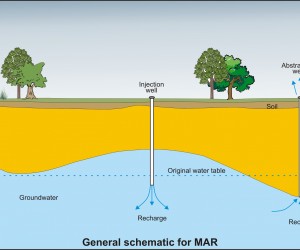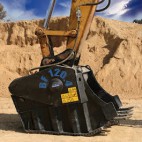In SA’s water-deficient environment, the role of groundwater has taken on new dimensions in recent decades. The latest National Water Resource Strategy (NWRS2), released in 2013, recognises groundwater as an under-utilised resource which will be crucial in addressing the nation’s water demand.
According to the Department of Water and Sanitation, groundwater use had already risen almost 40% between 2004 and 2012 – from 1 088 million cubic metres in 2004 to 2 466 million cubic metres. The department recognises too, of course, that while use of groundwater is to be maximised, the resource and its habitats will also need to be protected, both in terms of water quantity and quality extracted.
Research shows clearly that aquifers – unlike surface water resources like rivers, lakes and dams – do not replenish quickly. As an indication of this, it is not unusual for researchers to find that water has been present in an underground repository for hundreds of years, and sometimes, even longer.
So when mines, municipalities, farmers and factories look to exploit these hidden reservoirs, they need to think carefully about how and when such resources can be replenished.
Fortunately, considerable progress has already been made developing and applying the technology of managed aquifer recharge (MAR) – which is the active management of water to recharge aquifers so that environmental and social impacts can be minimised. There are many types of MAR, and one practice also allows water to be stored in aquifers for later recovery and use; this specific type of MAR – aquifer storage and recovery (ASR) – is the process of injecting water into an aquifer system via a recharge well so that it can be accessed later from that same well.
The relevance of these strategies for a water-scarce country like SA has been acknowledged by the DWS, which was already pursuing an ‘Artificial Recharge Strategy’ for groundwater resources almost a decade ago. There is considerable relevance for the local mining industry too, allowing mines to play an even greater role in balancing the country’s water demands with its water availability.
Mines’ experience abroad
Looking at the experience of other water-scarce mining countries, Australia provides an interesting case. In a recent tightening-up of water regulations in that country, mines there are now required to return water from de-watering operations back to the aquifers from which it was abstracted.
One of the ways of doing this was through a reinjection process, which I helped mining clients to develop and apply in the Pilbara Region of Western Australia. The application in this environment may have been new, but the concept and technology is well developed in countries like the United States – where I gained most of my experience in this field.
The United States Environmental Protection Agency (USEPA), in fact, defines a number of classes of recharge wells, and has a well-established framework of regulations that govern the way that water may be injected and recovered – in the interests of mitigating environmental impact as well as health and safety.
SA’s mines and MAR
How, then, could SA’s mining sector benefit from ASR, and what contribution could it make towards recharging aquifers for the benefit of all stakeholders?
It is clear that the pressure on SA’s water supply grows steadily with economic and population growth, as well as factors like the improved access to water in most communities. The reliance of most smaller towns on groundwater – rather than on dams and rivers, which are main water sources for metropolitan areas – inevitably means that municipalities will be in competition with other users for the available supply.
As one of these ‘competitors’, mines have already made strides toward conserving water and they frequently embark on projects that improve their local communities’ access to clean water. MAR is another potential strategy that could enhance their positive water impact while improving operational efficiencies.
Applied in the context of dewatering operations, mines can consider the substantial technology available to extract water from an aquifer before it enters the open pit or underground workings, and re-injecting it further ‘downstream’.
The strategy’s immediate benefits are not difficult to see. There is a potential reduction of the water volumes being contaminated in mine workings, lowering the pumping and re-treatment costs that are normally associated with wastewater before it can be legally discharged from the mining site.
A more proactive approach by mines to the recharging of aquifers would also help address the tensions that arise with nearby communities over the impact that mine dewatering may have on the groundwater level in the area, and hence on public access to drinking water.
Another obvious aspect worth consideration is the ease of storing water in aquifers, compared to building and maintaining surface infrastructure to store changing volumes of water on site. Subject to appropriate quality standards and environmental frameworks, surplus surface water could be conveniently stored underground in existing aquifers and drawn out when required. Aquifers also minimise evaporation, which can be significant in open-air reservoirs, and can provide a place where threats to water quality are minimal.
In conclusion, then, there appears to be plenty of opportunity for mines in SA to benefit from the experience of other countries and other sectors in aquifer management – particularly in the field of ASR. The technology is well proven, best practice standards are established, there are many examples of projects around the world, and SA authorities have signaled considerable interest in its relevance and potential to the country’s water future.
Hugh Klein
PULL QUOTE: Looking at the experience of other water-scarce mining countries, Australia provides an interesting case







